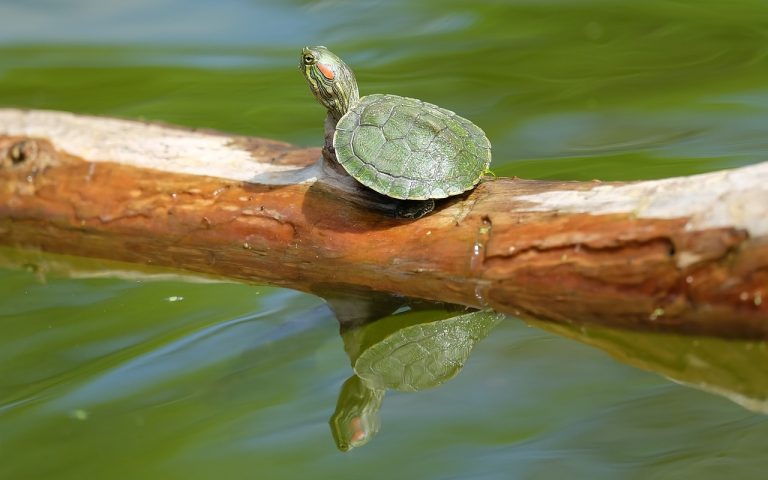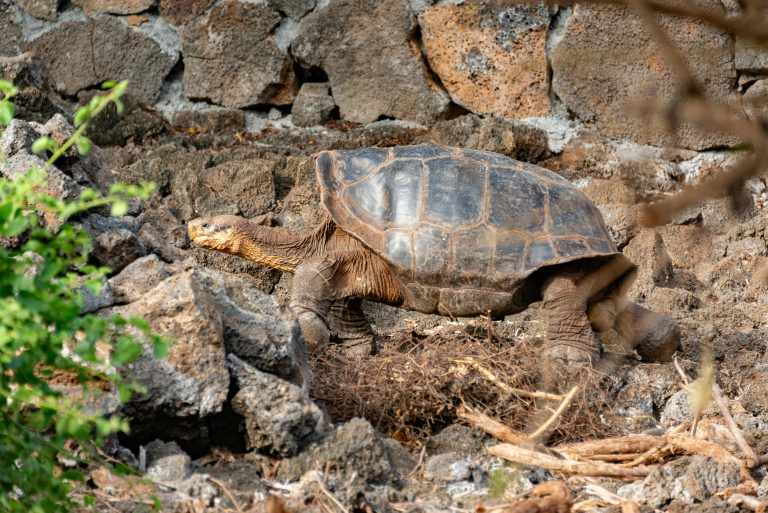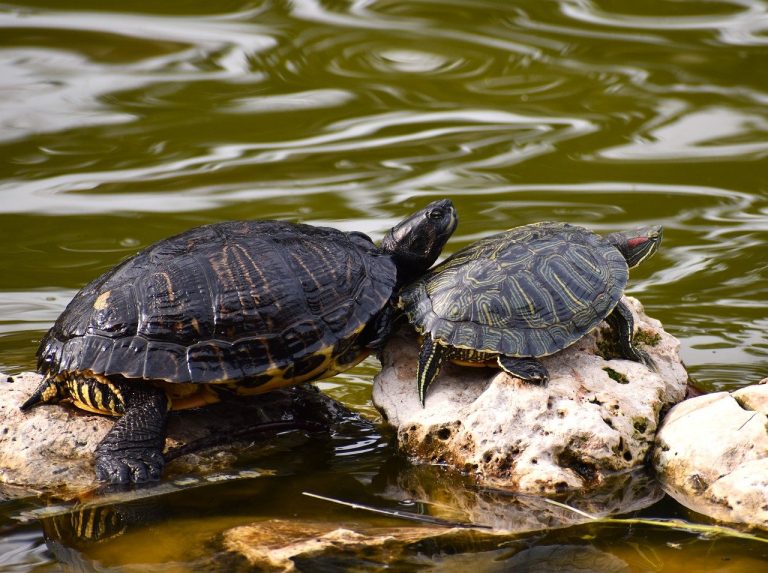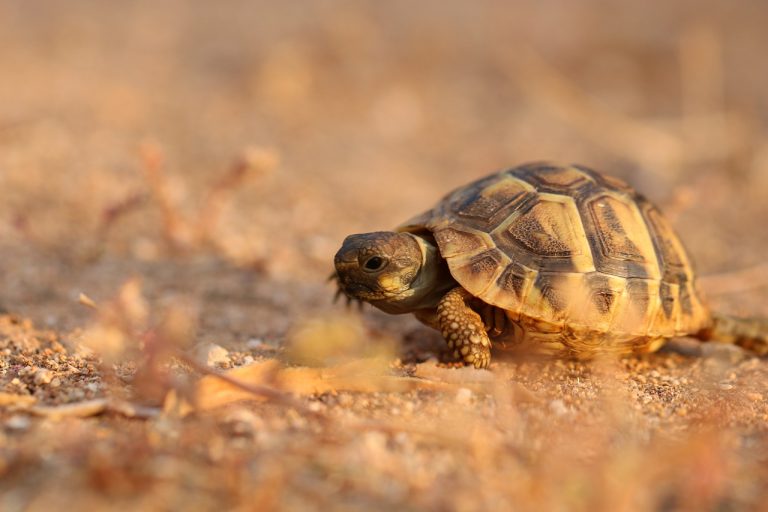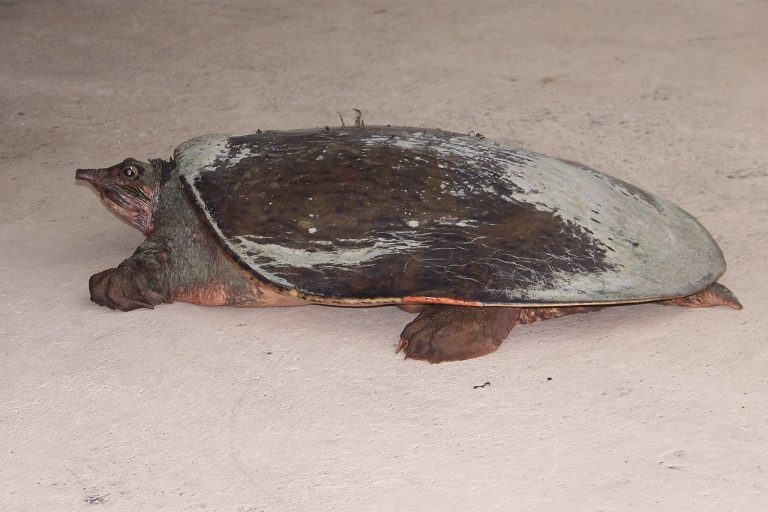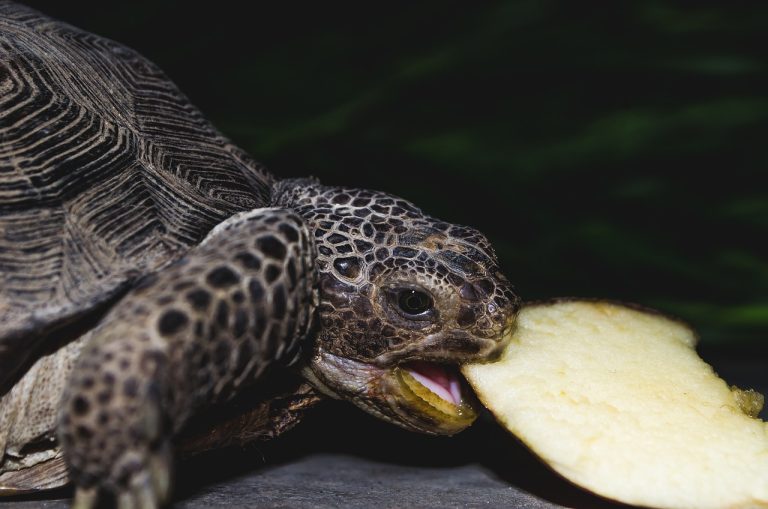What Do Red Eared Sliders Do In The Winter?
Have you ever marveled at the sight of a red-eared slider? They’re quite the common sight, often found gracefully gliding through local ponds. But here’s a mystery for you: have you ever noticed their disappearance when the cold season sets in? Where do they vanish to? And perhaps more intriguingly, what do they do during the winter months?
You see, the red-eared slider is a fascinating creature. Being cold-blooded, they can’t produce their own body heat. So, when winter creeps in, whether they’re in the wild, in an outdoor enclosure, or even in a tank without proper heating, they undergo a state called brumation to survive the chill.
In the following discussion, we’ll delve into the winter habits of red-eared sliders. Moreover, we’ll explore ways to ensure our pet turtles remain cozy and content during this chilly season. Stick around till the end of this article to uncover all the secrets!
Why Can Red Eared Sliders Not Endure Cold Season?
Unlike us humans, red-eared sliders aren’t endowed with the ability to regulate their body temperature internally; they’re ectothermic creatures. This means they must seek external sources for warmth, such as the sun or heat lamps.
In their natural habitat or outdoor enclosures, red-eared sliders bask in the sun’s rays to warm themselves. But when winter descends and the temperatures plummet, these reptiles find themselves lacking in options for heating their bodies. Consequently, they undergo physical adaptations to endure the cold.
Even indoor red-eared sliders aren’t immune to the chill if they lack sufficient heat sources. Without proper warmth, they too can suffer during the colder months.
What Happens To A Red Eared Slider During The Winter?
Being cold-blooded creatures, red-eared sliders undergo significant changes to adapt to severe cold conditions. As temperatures drop, these turtles become exceedingly lethargic, their metabolic rates slowing to a crawl. Despite their reduced activity, they continue to hydrate, albeit without eating. Their heart rates plummet by a staggering 80%, conserving precious energy in a state known as brumation.
While brumation may seem akin to hibernation, there are notable distinctions. Unlike hibernating animals, red-eared sliders remain awake during brumation, albeit in a state of extreme torpor. Additionally, they retain the ability to move about, albeit sluggishly, during this period.
It’s crucial to understand that red-eared sliders do not hibernate; they brumate instead. This distinction is vital. Brumation is a response to unbearable cold, and if provided with a suitable warm enclosure, their winter lifestyle remains relatively unchanged.
Where Do Red Eared Sliders Go In The Winter?
Now that we’ve delved into the brumation process of red-eared sliders during winter, let’s explore where exactly they undergo this fascinating physiological state.
In their natural habitats, red-eared sliders typically brumate underwater, nestled at the bottoms of ponds and shallow lakes. Alternatively, they may seek refuge in marshy areas, burrows, or even within logs. These secluded spots provide the necessary shelter and stability for the turtles to endure the cold months.
In captivity, such as in tanks or enclosures, red-eared sliders will often choose a spot at the bottom of their habitat to brumate. Here, they can remain relatively undisturbed as they enter their torpid state.
During brumation, red-eared sliders rely on absorbing oxygen through their skin, a remarkable adaptation that allows them to survive for weeks without needing to surface for air. It’s truly remarkable how these creatures have evolved to endure the harsh conditions of winter.
Can Red Eared Sliders Survive Cold Weather?
Ah, the question of whether brumation is safe for red-eared sliders is indeed a nuanced one, with answers that can swing both ways. Let’s unpack this complex topic.
Brumation, while a natural response to cold temperatures, can pose risks to your pet red-eared slider. There have been instances where turtles have perished either before or during the brumation process. This highlights the importance of understanding the intricacies of brumation, particularly if you’re considering allowing your pet to undergo this physiological state.
Indoor brumation comes with its own set of considerations and potential dangers. A single misstep could have dire consequences for your turtle. Similarly, even in the wild or outdoor habitats, brumation can be perilous, especially if temperatures plummet to freezing levels, putting the turtles at risk of freezing to death.
But let’s not misconstrue this cautionary tale as a condemnation of cold weather itself. Red-eared sliders, like many other turtle species, possess remarkable resilience. In their natural environments, they’re often adept at navigating the rigors of brumation safely. However, for captive red-eared sliders, it falls upon their caretakers to ensure they’re provided with the optimal conditions for brumation, or to provide alternative winter care if brumation is not desired.
In essence, whether your pet turtles brumate or not, diligent care and attention are paramount to their health and well-being. Red-eared sliders possess an incredible ability to endure harsh conditions, but it’s our responsibility as caretakers to safeguard their lives and ensure they thrive, regardless of the challenges they may face.
The Red Eared Slider Brumation Temperature
Understanding the temperature thresholds at which red-eared sliders enter brumation is crucial for proper care, especially if you’re raising them in a home tank.
Typically, these turtles begin to slow their activity when the overall temperature decreases by approximately 3 to 4 degrees. However, it’s when the temperature dips below 50 degrees Fahrenheit (or 10 degrees Celsius) that the environment becomes too chilly for comfort. At this point, red-eared sliders are almost certain to enter brumation.
Being aware of these temperature cues allows you to anticipate and prepare for your pet’s winter needs. Monitoring the temperature in their habitat becomes paramount during colder months, ensuring it remains within the safe range to prevent brumation unless desired. By staying vigilant and responsive to temperature fluctuations, you can provide the optimal conditions for your red-eared slider’s health and well-being throughout the year.

Can Red-Eared Sliders Live Outside In Winter?
The question of whether red-eared sliders can survive outside during winter isn’t straightforward. While some may endure the cold, it’s not a guarantee for all.
In their natural habitats, red-eared sliders often brumate at the bottoms of ponds or rivers, successfully navigating the chilly winter months. Healthy adult turtles typically fare well during this period. However, younger or weaker individuals may struggle to withstand the harsh conditions and may not survive.
For pet red-eared sliders, extra care is essential during winter. If they’re kept in an outdoor enclosure or pond, it’s advisable to bring them indoors to a well-heated tank. Unlike their wild counterparts, pet red-eared sliders lack the same immunity, having been born and raised in captivity. This makes them more susceptible to the rigors of winter weather.
By providing a warm and controlled environment indoors, you can ensure the well-being of your pet red-eared slider throughout the colder months, safeguarding them against the risks associated with outdoor exposure.
How To Take Care Of The Red Eared Sliders In The Winter
Now that we’ve discussed the brumation process of red-eared sliders and the potential risks they face without proper care, it’s imperative as responsible turtle owners to prioritize their winter well-being. Here are some essential tips to ensure your red-eared sliders thrive during the colder months:
- Maintain Water Temperature: Keep the water temperature in the tank within the range of 78 to 86 degrees Fahrenheit (25 to 30 degrees Celsius). Investing in an automatic water heater can help you achieve and maintain this ideal temperature consistently. Ensure the heater operates continuously, providing a warm and comfortable environment for your turtles.
- Provide Adequate Heating and UV Lamps: Install high-quality heating and UV lamps to keep the basking area and air warm. The heating lamp should remain on throughout the day and night, mimicking the natural sunlight your red-eared sliders would receive in their native habitat. This ensures they have access to essential warmth and UV rays for their overall health and well-being.
- Balanced Diet: Maintain a balanced diet for your red-eared sliders, even during the winter months. Ensure they receive proper nutrition by offering a variety of foods, including commercial turtle pellets, fresh vegetables, and occasional treats like feeder insects. Proper nutrition is crucial for their immune system and overall health, helping them withstand the challenges of winter more effectively.
By following these tips and providing your red-eared sliders with the best winter care possible, you can ensure they remain healthy, happy, and thriving throughout the colder months. Your dedication to their well-being reflects your role as a responsible and caring turtle owner.
Frequently Asked Questions
Let’s take a more personal approach to understanding red-eared sliders and their winter habits:
Do Red Eared Sliders Hibernate?
Well, not exactly. Instead of hibernating like some animals do, red-eared sliders enter a state called brumation. It’s kind of like a deep, sleepy mode that reptiles experience, influenced by factors like the weather and each turtle’s own unique characteristics.
In the wild, you might find red-eared sliders cozied up at the bottom of ponds or shallow lakes during winter, taking it easy until the weather warms up. But if you have one as a pet, they might not brumate as indoor temperatures usually stay nice and warm.
How Long Can Red Eared Sliders Live In Cold Water?
Red-eared sliders aren’t fans of chilly swims. If the water temperature dips below 50 °F (10 °C), they’ll struggle to stay comfortable for long. They’re happiest splashing around in water that’s between 70 to 88 °F (21 to 31 °C), depending on their age and health.
Can Red Eared Sliders Live Outside In Winter?
It’s best not to keep red-eared sliders outside during winter in colder regions. Freezing temperatures can be tough on them, potentially leading to health issues like respiratory infections or even worse. Bringing them indoors or providing a toasty shelter with heating can help keep them safe and cozy. But if you’re in a warmer climate, with the right care and attention, they might enjoy outdoor living all year round.
Are Red Eared Sliders Cold Blooded?
Absolutely! Red-eared sliders are cold-blooded reptiles, meaning they rely on the environment to regulate their body temperature. They soak up warmth from the sun to keep themselves toasty and active. You’ll often find them soaking up rays during the day, while they might take it easy when things cool down.
What Temperature Is Too Cold For Red-Eared Sliders?
Anything below 50 °F (10 °C) in the water is a bit too chilly for comfort for these turtles. While they might tough it out for a bit, extended exposure to such cold conditions could spell trouble, possibly leading to organ failure. So, it’s essential to keep their aquatic homes nice and cozy to ensure their well-being.
Before You Go….
Ensuring the well-being of your red-eared slider requires dedicated care, especially during the winter months. Throughout this article, I’ve endeavored to shed light on the challenges these turtles face in colder climates and provide guidance on how to keep them comfortable.
From understanding their brumation behaviors to maintaining optimal water temperatures and providing suitable shelter, every aspect of their care plays a crucial role in their health and happiness.
I sincerely hope the information shared here has been valuable to you as you embark on the journey of caring for your red-eared slider. By implementing the tips and insights provided, you can create an environment where your pet thrives, ensuring many happy and healthy years together.
